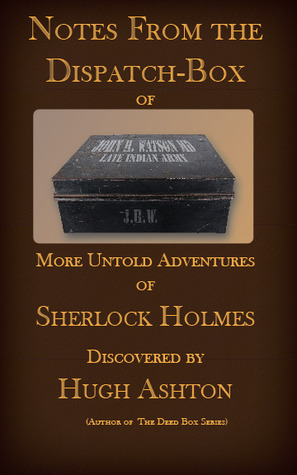
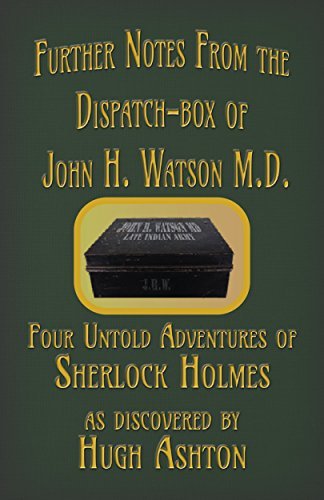
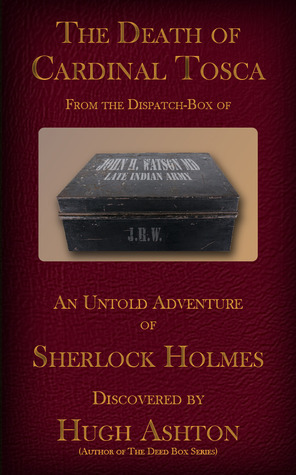
Books in series

#1
Notes from the Dispatch-Box of John H. Watson MD
2013
Another discovery from the vaults of Cox and Co., the old London bank which had forwarded the Deed Box of John H Watson to the author last year. The Dispatch Box contains all manner of illuminating documents about Messrs. Holmes and Watson. Of particular interest are what the author refers to as The Affair of the Vatican Cameos, the Reigate Poisoning Case, and a document apparently written by the man Holmes himself called 'the fourth smartest man in London', John Clay.
Grateful acknowledgement to Conan Doyle Estate Ltd. for permission to use the Sherlock Holmes characters created by Sir Arthur Conan Doyle.
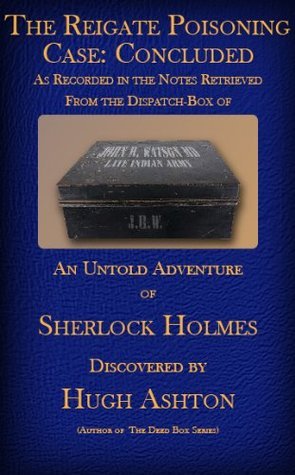
#1.5
The Reigate Poisoning
Concluded
2012
The Reigate Poisoning Case: Concluded forms a sequel to the adventure described in Notes from the Dispatch-Box of John H. Watson MD and provides a full and satisfying conclusion to that story. It is not often that Sherlock Holmes made an error of judgement, but this is one case where he made such a fatal (literally) mistake. No wonder that he prevented Watson from publishing the case in his lifetime!

#2
Further Notes from the Dispatch-Box of John H. Watson M.D.
Four Untold Adventures of Sherlock Holmes
2013
The dispatch-box of John Watson continues to yield treasure. Four accounts by the good doctor of cases of Sherlock Holmes, previously unpublished, but mentioned in other adventures:
The Abernetty Horror - blood and gore in a peaceful Welsh village
The Case of the Finsbury House - where what meets the eye is far from being the truth
The Curious Affair of the Archdeacon – and it really is curious
An account of the Victor Lynch Forgery - told by Lestrade in a letter to Watson, following Holmes' "death"
All in the style of the originals by Sir Arthur Conan Doyle.

#3
The Death of Cardinal Tosca
2013
In The Hound of the Baskervilles, Dr. John Watson writes about Sherlock Holmes' "famous investigation of the sudden death of Cardinal Tosca—an inquiry which was carried out by him at the express desire of His Holiness the Pope." The express wishes of Sherlock Holmes, as expressed in a written note on the outside of an envelope, have been ignored, in order to bring this case before the public.
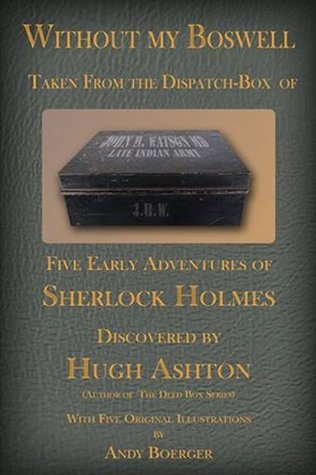
#4
Without My Boswell
Five Early Adventures of Sherlock Holmes
2014
Before John Watson had his fateful encounter with the eccentric beater of corpses at Barts, there was a consulting detective by the name of Sherlock Holmes, who had already built up a practice and a reputation that extended to Scotland Yard. However much he may have felt lost without his Boswell later in his career, Holmes was playing a solo game when he started out.
Here are five cases which helped to establish Sherlock Holmes in his career as the world's first consulting detective, all of which are mentioned by name in the original stories by Sir Arthur Conan Doyle:
The Tarleton Murders
The Case of Vamberry the Wine Merchant
The Singular Affair of the Aluminium Crutch
The Case of the Aboninable Wife
The Adventure of the Two Bottles
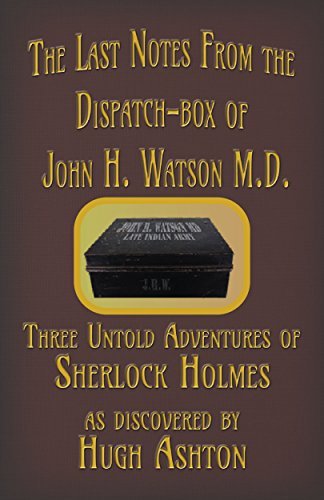
#5
The Last Notes From the Dispatch-box of John H. Watson M.D.
2014
Found at the bottom of a dispatch box once belonging to John H Watson, MD, are notes of cases which, until now, had never been read. Notes that reveal the details of The Russian Bear, The Hand of Glory and the Missing Spoons.
The first of these, “The Case of the Russian Bear”, involves the British Government, as represented by Mycroft Holmes. The circumstances surrounding it are mentioned in “The Disappearance of Lady Frances Carfax”, where Holmes mentions to Watson that it would be impossible for him to leave London while “old Abrahams” is in such danger. We are not told any more about Abrahams in the Canon, but he may be identified as Sir David Abrahams, who makes his appearance in “The Enfield Rope”.
In it, we see Holmes’ varied interests, including Kaballah, and some knowledge of the anarchist and revolutionary movements in Russia at the end of the 19th century (the last no doubt at least as the result of his work for Mycroft).
There can be little doubt in my mind that Watson witheld publication of this adventure on account of its political sensitivity.
The second adventure recorded here, “The Hand of Glory”, is a purely domestic adventure, taking place as it does in a small unnamed Warwickshire market town, which it is impossible to identify from the sketchy description here.
Holmes’ knowledge of the esoteric superstitions of the past stands him in good stead here, and leads him to a satisfactory elimination of a criminal conspiracy, set up and masterminded for reasons of personal revenge.
The grisly elements in this story are beyond anything described elsewhere by Watson, surpassing even “The Cardboard Box” and “Black Peter” in their gruesome nature. It seems to me that this would form a reason for this adventure to remain unpublished by Watson.
Lastly, we turn to the “Disappearing Spoon” ; a light-hearted look at a very minor incident in which Holmes renders assistance to a former schoolfellow. Disappointingly, though, we are not informed which school he attended (my personal belief is that Holmes was educated at Stonyhurst College, but there is no way of verifying or disproving this from the material available here).